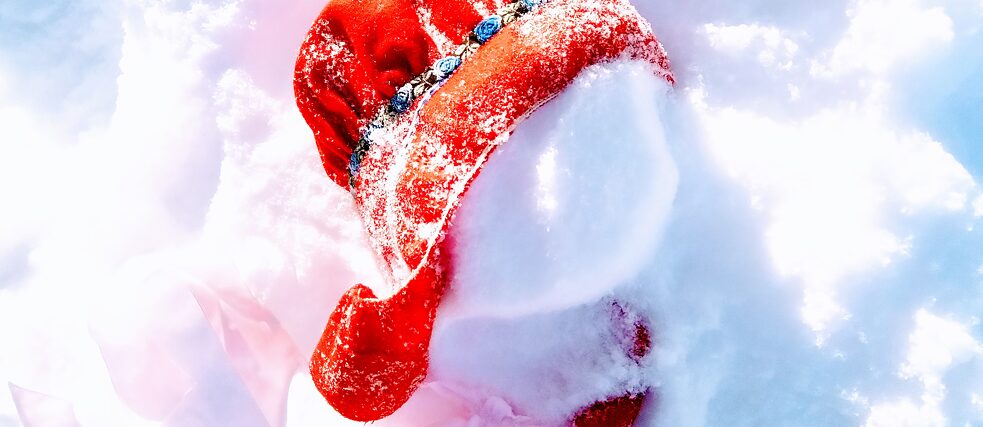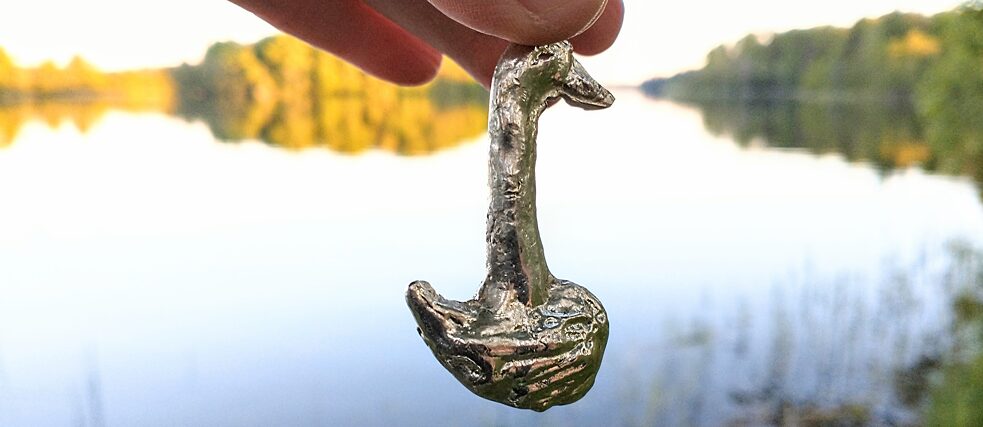Animistic Sámi Spirituality
Climate Change as a Spiritual Crisis

When speaking to Sámi people it seems that for many Sámi, a good life is linked to the well-being of the environment. This text focuses on the Indigenous spirituality of the Sámi and its perspectives on the environment, death and climate change.
By Helga West
Many Indigenous peoples today have highly specialised knowledge systems. In order to learn how to interpret these nuanced knowledge systems, one needs to grow into those cultures. These information systems include inherited local knowledge of the environments and how to cope in them. It can be said that Sámi’s Indigenous spirituality contributes to their luck in fishing and hunting and, in that way, a broader understanding of good life. The understanding of a good life is thus tied to livelihoods, and livelihoods are tied to the environment.
The Sámi are recognised as Indigenous peoples in Finland, Norway and Sweden. In addition to these Nordic countries, the Sámi also live in Russia. Indigenousness means that the Sámi have traditional livelihoods and forms of society from before the formation of present states.
How to Settle in an Environment that Has Already been Inhabited?
When looking at Sámi Indigenous spirituality as told by the Sámi themselves, one can draw the conclusion that it is thoroughly animistic. Animism refers to the view of life in which different beings and forms in one’s surrounding, such as animals, earth spirits and fells, are thought to have independent subjectivity. This animistic emphasis is also strongly reflected in the Sámi's current descriptions of how to behave, cope and negotiate the environment.Since every surrounding consists of different kinds of beings, this means that the Sámi must, in one way or another, strive to live in a way that takes into account actors other than human beings. In the Sámi’s view of life, the environment is not an empty natural resource destination to go to and take from. Instead, when settling in the environment, the Sámi ask for permission for their own ecological survival. For example, a Sámi may request permission to cut down a particular tree, catch fish from a lake or stay overnight in nature to ensure that when they stay in the terrain, they do not interfere with the passages of earth spirits. The question is: How to settle in an environment that has already been inhabited?
Close Relationships with Animals Are in Conflict with Killing and Dying
Without romanticizing the Sámi Indigenous spirituality, several historical and contemporary sources – like Tore Johnson, Nils Oskal or Juha Pentikäinen – portray the Sámi environmental relationship as one that questions the worldview that sees humans as the lord of the creation.The relationship with animal species is traditionally close in Sámi cultures. This close relationship is particularly prominent in reindeer herding culture. A reindeer dog has acted as a close partner for a reindeer herder before reindeer husbandry became motorised. The relationship between a reindeer herder and a half-tame reindeer ends with violent death, the killing of a reindeer.
 In the Sámi cultures, a swan has carried lots of symbolic and spiritual meanings.
| Photo (detail): Helga West
The theme of killing seems to be a kind of traumatic paradox in the animist worldview, that is, the contradiction that one's own well-being requires the end of another being's life. Therefore, in Sámi spirituality, killing an animal is a radical change in the power relationship of two beings.
In the Sámi cultures, a swan has carried lots of symbolic and spiritual meanings.
| Photo (detail): Helga West
The theme of killing seems to be a kind of traumatic paradox in the animist worldview, that is, the contradiction that one's own well-being requires the end of another being's life. Therefore, in Sámi spirituality, killing an animal is a radical change in the power relationship of two beings.
According to the Most Pessimistic Estimates, Reindeer will Disappear from the Arctic
For the Sámi, the climate crisis is a matter of absolute death, of the state of emergency of life. Climate change, meaning global warming as a result of human activity and the resulting uncontrolled changes in the environment, has already put the livelihoods of the Sámi at stake and consequently the existence of this group of people. This is shown by studies on, for example, the stress, mental health and concern of reindeer herders regarding the preservation of their own culture.According to the most pessimistic research estimates, reindeer will disappear from the Arctic due to global warming. For centuries, reindeer were among the few mammals that adapted to the cold Arctic climate. Therefore, in the long run, they cannot cope with global warming, because climate change exposes the reindeers to new threats, like animal diseases.
Salmon stocks are also under threat. In April 2021, the Government of Finland announced that salmon fishing will be completely banned in the Tenojoki river waters in 2021. The reason is the sudden decline in salmon stocks, which was noticed during monitoring. Less water bodies and rapid changes of their temperature have a direct impact on those salmon stocks.
The Death of Arctic Species – The Death of Sáminess?
My question is: What will be left of Sáminess if reindeer and salmon disappear from Sámi cultures? How would it affect the material life of the Sámi, such as food and clothing traditions? What about intangible life, such as languages, knowledge systems and spirituality? The possible disappearance of Arctic species represents a threat of absolute death of the Sáminess. The climate crisis is therefore an ultimate emergency for the existence of human and other life forms, the signs of which have already appeared in many places in the Sámi land.The climate crisis, in its deepest nature, exposes an ultimate failure in humanity’s intellectual and spiritual heritage. Thus, climate change is a profoundly spiritual crisis. I would suggest that animistic Sámi Indigenous spirituality challenges the mechanistic worldview of humans, animals, and the environment and their symbiotic relationship and well-being.
The question remains, what kind of meaning do we give to local knowledge systems?